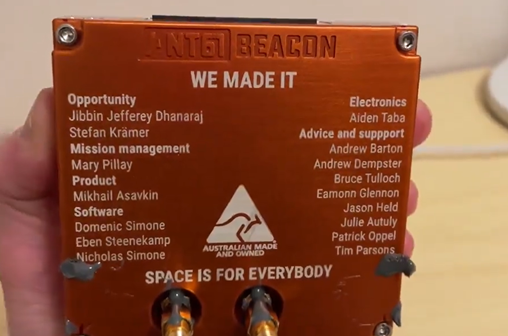
Working with engineers from German Aerospace Center (DLR) and SSC – Swedish Space Corporation, Australian start-up ANT61 has completed its ‘Beacon’ integration and tests, with the space-grade hardware built from scratch and tested in space in under 12 months.
In a social post, the company reported:
- The Beacon worked throughout the whole launch
- Survived 12g of acceleration and 4Hz of spinning
- Reached well beyond the Karman line to 260 km
- Communicated with two different satellite constellations
- Accurately measured the acceleration, velocity, rotation and attitude
- Collected very valuable data during this flight
The company acknowledged Mary Pillay who managed the mission end to end, navigating multiple companies and space agencies involved, making sure we did everything on time and on quality. Other contributors included Eben Steenekamp, Aiden Taba, Domenic Simone and Nicholas Simone, who worked on the Beacon software and hardware. Mikhail Asavkin 🇦🇺 who made sure we have all the features in the Beacon that our customers want so much, encouraging us to be bold and take risks, often pushing us to the edge of what was technically possible.
Andrew Barton, Andrew Dempster, Bruce Tulloch, Eamonn Glennon, Jason Held, Julie Autuly, Patrick Oppel, Tim Parsons who were supporting and mentoring the company, helping to build connections with future customers and avoid costly pitfalls.
Thanks were also given to Jibin Jeffrey Dhanaraj and ResearchSat team, who helped get on this rocket very late into the mission, and Stefan Krämer from SSC – Swedish Space Corporation and Australian Space Agency for issuing the payload permit on a tight schedule.





